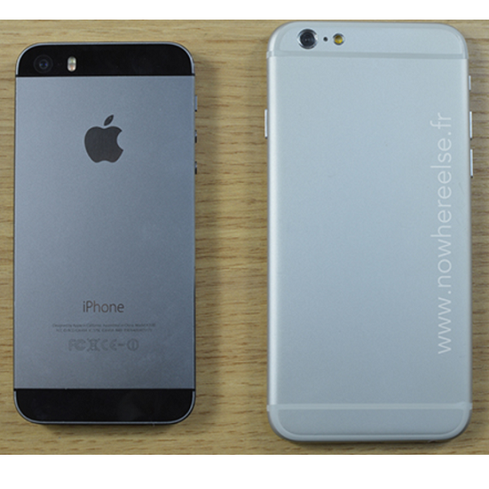Smartwatches Need A DisrupterSmartwatches Need A Disrupter
Current smartwatches don't offer enough useful features to catch on with consumers, says analyst. Will Apple change that?


iPhone 6: 8 Ideas Ripped From Rivals?
iPhone 6: 8 Ideas Ripped From Rivals? (Click image for larger view and slideshow.)
Today's smartwatches just aren't getting the job done. The demand drivers for such devices are limited at best, argues one analyst, and only a transformative product will boost the widespread appeal of smart wearables. Few companies are in a position to deliver such a product, with the exception of a few obvious players.
Jan Dawson, founder and chief analyst at Jackdaw, compiled some sobering statistics about wearables. Most wearables provide one of two major functions: delivering push notifications and tracking fitness and activity. Dawson's research shows 80% of US and UK consumers have never worn a fitness tracker, and of the 20% who have, about half stopped wearing them. That leaves just 10% of the population of these two countries -- about 40 million people -- actually wearing the devices.
Smartwatches as smartphone companions face a similarly small market. The major benefit pitched by smartwatch makers is the ability to receive notifications on the wrist. Those notifications are pushed by the smartphone for a variety of apps, such as email, messaging, incoming calls, Facebook, and so on. Only about half the people in the US own a smartphone. Of those, approximately three-quarters use push notifications -- but only for one or two apps. Dawson believes smartphone owners need to use push notifications for at least three apps before they'll begin to realize the benefit offered by smartwatches. That number is about a quarter of smartphone owners, who represent about 15% of the US population, or around 48 million people.
[Need a little help putting names to faces? Read Humin iPhone App Adds Context To Contacts.]
All this data suggests that smartwatches and other wearables aren't currently addressing the needs of the masses enough to warrant widespread adoption. But a transformative product could change that.
Dawson likens today's wearable market to the MP3 player market of 2001, the smartphone market of 2007, and the tablet market of 2010. "In each of those years, Apple entered the market with a new device which transformed the category and turned it from niche to mainstream in short order," Dawson wrote. "In each case, existing devices were clunky, narrow in their appeal, performed poorly and failed to ignite consumer interest. Apple isn't the only company that can do this -- Sony arguably did it with the Walkman many years earlier and other companies have similarly reinvented other categories. But Apple is the one with the track record over the last 15 years or so, and I think that’s why everyone is so eagerly anticipating its entry into this market."
{image 1}
Apple's success in the wearables market is anything but guaranteed. First, Apple could still screw it up. While anticipation for the iWatch is high, we know almost nothing about it. It could fall in line with the existing crop of devices, serving only to provide notifications and activity tracking. If that's all the iWatch does, it'll be just as much a niche product as today's devices.
Creating a successful wearable device involves lots of variables. To generate mass appeal, wearables must be attractive for men and women, they can't be too large or too small, and they must feature a good display that is always on. Also, they need to provide days of battery life, be easily charged, offer solid functionality, and provide useful interactions. It's all too easy to miss the mark on one or more of these criteria, dooming products to the dustbin.
"Apple faces the same challenges as any other company in this space," notes Dawson. "Does [it] have the potential to somehow overcome these technical challenges, as it seemed to do with the iPhone in 2007? Or will it instead reinvent the category, taking a fundamentally different approach? Perhaps we'll be surprised and Apple won't even enter the smartwatch category directly at all, instead blazing a new trail. Whatever Apple ends up doing, I'm hoping it opens the eyes of the other vendors in the market to what's possible, and helps them raise their game, too. We can do much better."
There's no doubt about that. Google recently entered the wearable space with its Android Wear platform. Wear is available on devices from Samsung and LG (and soon Motorola). The early wave of reviews mostly concluded that Android Wear (as a platform) has promise, but it is still far from perfect. Criteria aside, what do we really want or need from wearables? That's the million-dollar question Apple, Samsung, Sony, and others must answer before wearables truly take off.
In its ninth year, Interop New York (Sept. 29 to Oct. 3) is the premier event for the Northeast IT market. Strongly represented vertical industries include financial services, government, and education. Join more than 5,000 attendees to learn about IT leadership, cloud, collaboration, infrastructure, mobility, risk management and security, and SDN, as well as explore 125 exhibitors' offerings. Register with Discount Code MPIWK to save $200 off Total Access & Conference Passes.
About the Author
You May Also Like






